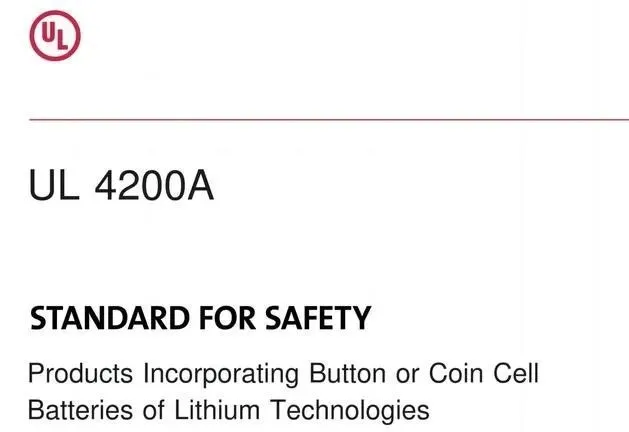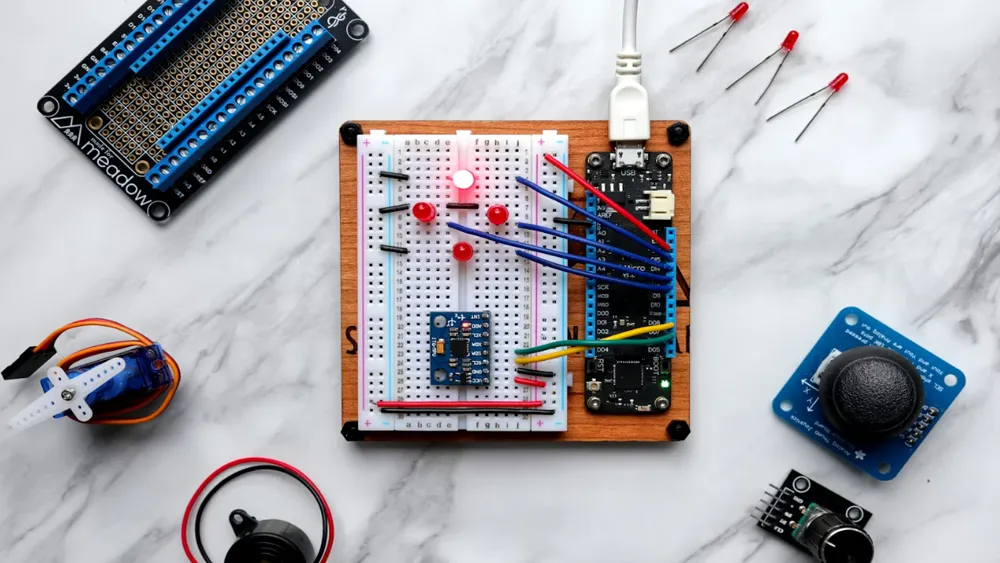
What is the UL 4200A Test Report?
What is UL 4200a?
UL 4200A is a priority bill introduced by Senators Richard Blumenthal (D-CT) and Marsha Blackburn (R-TN), calling for safety standards for batteries in consumer products. The Reese Act is named in memory of 18-month-old Reese Hammersmith, who passed away in December 2020 after swallowing a coin cell battery. The legislation was signed into law in August 2022 and mandates the U.S. Consumer Product Safety Commission (CPSC) to establish mandatory requirements for a range of battery-poweRED consumer products using button or coin cell batteries to prevent child access.

In September 2023, the CPSC issued the final rULe adopting UL 4200A:2023 as the mandatory safety standard for products containing button cells, codified as 16CFR part 1263, with enforcement beginning on March 19, 2024. This regulation requires all products containing button cell batteries sold on U.S. e-commerce platforms such as Amazon and TEMU to pass the UL 4200A:2023 safety standard test and upload the ul report to avoid delisting.
What are the Categories of Button Batteries?
1. CR Series:
- The CR series button batteries are common models. The CR2032 battery has a diameter of 20mm and a thickness of 3.2mm, with a capacity of approximately 220mAh, primarily used in calculators, watches, and weight scales. The CR2016 battery also has a diameter of 20mm but a thickness of only 1.6mm and a capacity of about 90mAh, commonly used in electronic toys and remote controls.


2. LR Series:
- The LR series button batteries are alkaline batteries. For example, the LR44 battery has a diameter of 11.6mm and a thickness of 5.4mm, with a capacity of approximately 150mAh, frequently used in watches and remote controls.
3. AG Series:
- The AG series button batteries are also common, including models like AG3, AG10, and AG13, typically used in toys and gifts.
4. SR Series:
- The SR series button batteries include the SR626SW, a silver oxide battery with a diameter of 6.8mm and a thickness of 2.6mm, with a capacity of about 28mAh, often used in watches and electronic toys.
III. What are the UL 4200A:2023 Test Items?
1. Abuse Tests:
- These tests simulate the potential abuse that button batteries might undergo, including drop, impact, crush, twist, pull, and compression tests. The drop test requires batteries to be dropped from a certain height onto a hard surface multiple times. The impact test involves applying force to the battery casing or compartment cover, while the crush test applies sustained pressure to the battery's exposed surface.
2. Battery Compartment Safety Tests:
- These tests primarily assess the sturdiness of the battery compartment to prevent users from easily moving or replacing the battery. This usually involves applying external force to test the compartment's integrity, ensuring the battery does not separate during the test.
3. Labeling and Marking Requirements:
- The UL 4200A standard also specifies labeling requirements for products and packaging. These labels must be clear, permanent, and comply with specific readability standards. The label content should include warnings about battery safety to alert consumers, especially regarding the dangers to children.
Email:hello@jjrlab.com
Write your message here and send it to us
 What is Amazon TIC and How Can Sellers Achieve Com
What is Amazon TIC and How Can Sellers Achieve Com
 2026 Battery UN38.3 Certification (Test Report) &a
2026 Battery UN38.3 Certification (Test Report) &a
 What is the IEC 62680 Standard? Compliance Interpr
What is the IEC 62680 Standard? Compliance Interpr
 Amazon Japan December Compliance Requirements
Amazon Japan December Compliance Requirements
 How to Check a CPSC-Accepted Laboratory?
How to Check a CPSC-Accepted Laboratory?
 WEEE Registration for Waste Electrical &Electr
WEEE Registration for Waste Electrical &Electr
 MSDS Chemical Safety Testing
MSDS Chemical Safety Testing
 What Are the Differences Between UK REACH and EU R
What Are the Differences Between UK REACH and EU R
Leave us a message
24-hour online customer service at any time to respond, so that you worry!




